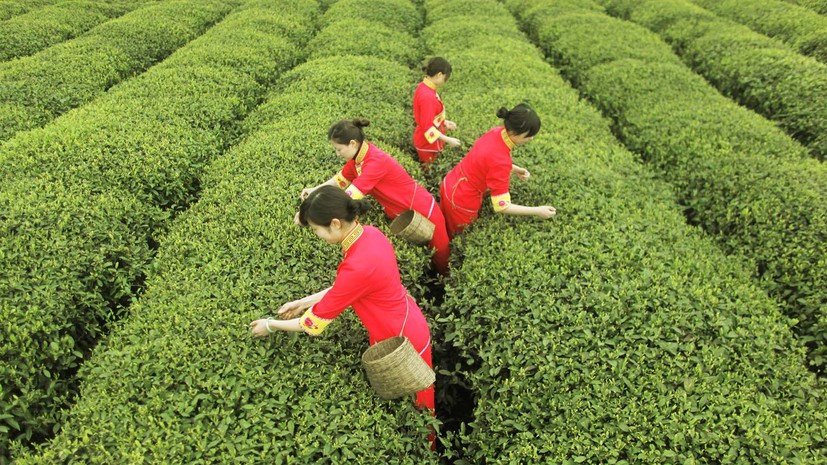Since the beginning of 2020, the average price of tea at the world's largest trading floors decreased by 7.8% and in February amounted to $ 2.37 per kilogram. The value has become the lowest since March 2016. This is evidenced by the World Bank, which calculates the price of tea on the basis of quotations of three auctions in Colombo (Sri Lanka), Calcutta (India) and Mombasa (Kenya).
The most expensive tea is sold in Sri Lanka - in February, its cost was $ 3.35 per kilogram. Indian tea traded at $ 1.64, and African varieties at $ 2.11 per kilogram.
The cost of a popular drink has been moderately reduced since October 2017 - then its price reached a historic high and amounted to $ 3.29 per kilogram. Since then, tea leaves have fallen in price by almost 28%.
As RT CEO of Goldman Group Dmitry Gelemurzin told RT, the decline in world tea prices is due to an increase in global supply of goods by an average of 2% per year and a simultaneous decrease in demand. According to recent estimates, in 2018 tea production in the world reached 5.85 million tons, and consumption - 5.61 million. Thus, the oversupply of the product on the market amounted to about 240 thousand tons.
Today, the world leaders in growing tea leaves are India and China. In the total volume of global production, countries occupy 21.7% and 40.3%, respectively. Meanwhile, both states are mainly focused on domestic consumption of tea, and not on export. At the same time, the main suppliers of goods to the world market are Kenya and Sri Lanka. This was told to RT by the Director General of the Russian Association of Tea and Coffee Manufacturers Roschaykofe Ramaz Chanturia.
“Kenya is in first place in world tea exports, followed by Sri Lanka. Basically, it is production in these countries that affects the global price level. Three years ago, African countries set themselves the ambitious task of increasing the supply of tea leaves, and today they have achieved the desired result, ”the expert explained.
According to the forecast of the FAO Intergovernmental Group on Tea (UN Food and Agriculture Organization), in the next seven years, the production of black tea in the world will grow by 2.2% annually and will reach 4.4 million tons by 2027. At the same time, green tea production will increase even faster - by 7.5% per year - and reach 3.6 million tons.
As noted by Dmitry Gelemurzin, amid growing production in the world, the consumption of precisely traditional varieties of tea is gradually decreasing. According to the expert, in recent years, people have increasingly preferred herbal preparations and coffee.
“Buyers are increasing the share of consumption of other types of tea - red, white, herbal. The demand for coffee is also actively gaining momentum, and this trend has been observed over the past three years, ”the analyst added.
Moreover, since the beginning of 2020, the spread of coronavirus in China has had a noticeable pressure on tea prices. This was told in an interview with RT by the head of the investmentide department of BCS Broker Narek Avakyan.
“The record decline in tea prices in the world that we are currently observing is primarily due to coronavirus. As a result of the spread of the disease, demand decreases and so many other goods become cheaper - from raw materials to food, ”Avakyan explained.
Recall that at the end of December 2019, authorities in Chinese Wuhan reported an outbreak of a respiratory infection of unknown origin. According to local experts, the cause of the disease was a new type of coronavirus. Today, more than 100 thousand people around the world have become infected with COVID-19, more than 3 thousand have died.
“In the current conditions, an increase in the cost of tea on the world market is not expected in the near future - prices will either remain at the current level or slightly decrease,” Dmitry Gelemurzin believes.
At the same time, experts interviewed by RT differently assess the impact of global tea cheapening on the Russian market.
“The fact is that prices in Russia are affected by a number of factors. Our tea is bought abroad, so its price depends on the dollar. Moreover, the importance of packaging costs, logistics costs, as well as the level of retail margins and advertising costs, ”explained Gelemurzin.
At the same time, Narek Avakyan believes that the global trend to some extent may affect the cost of Russian tea. According to him, in the current conditions, prices may fall by about 1%.

